Modern Art Movements: Duchamp, Constructivism, Dada, and Feminist Perspectives
1/254
There's no tags or description
Looks like no tags are added yet.
Name | Mastery | Learn | Test | Matching | Spaced |
|---|
No study sessions yet.
255 Terms
Readymade
An everyday object an artist calls art, making people question what art is and who makes it.
Duchamp
An artist who invented 'readymades' and made people think about art's place in society.
Fountain
Duchamp's 1917 artwork, which was just a signed urinal. It made people ask what truly counts as art and who decides.
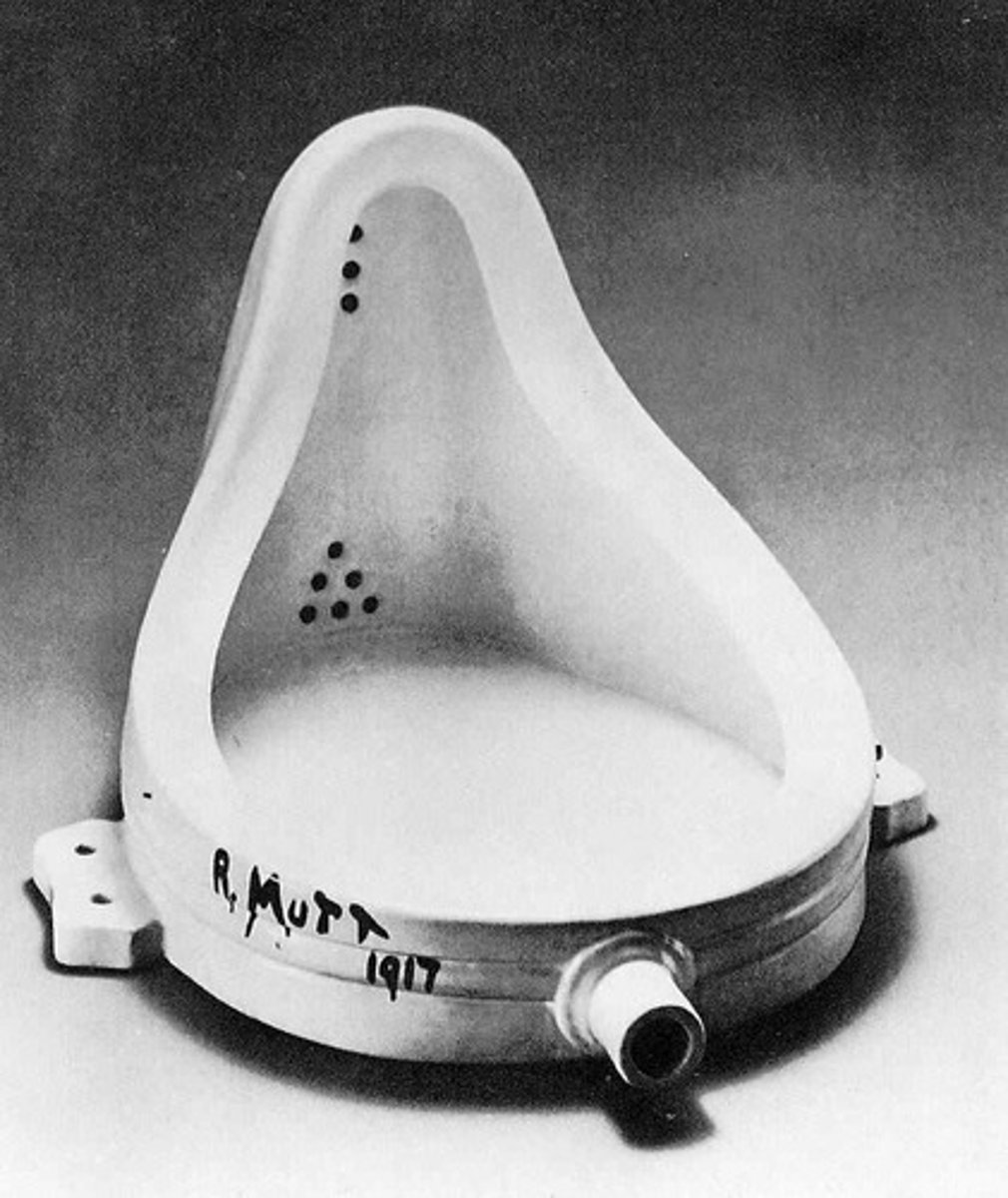
R. Mutt
The fake name Duchamp used when he submitted his urinal artwork, 'Fountain,' to an art show.
Bicycle Wheel
Duchamp's 1913 artwork: a bicycle wheel mounted on a stool. It showed how art was becoming less about skilled hand-making.
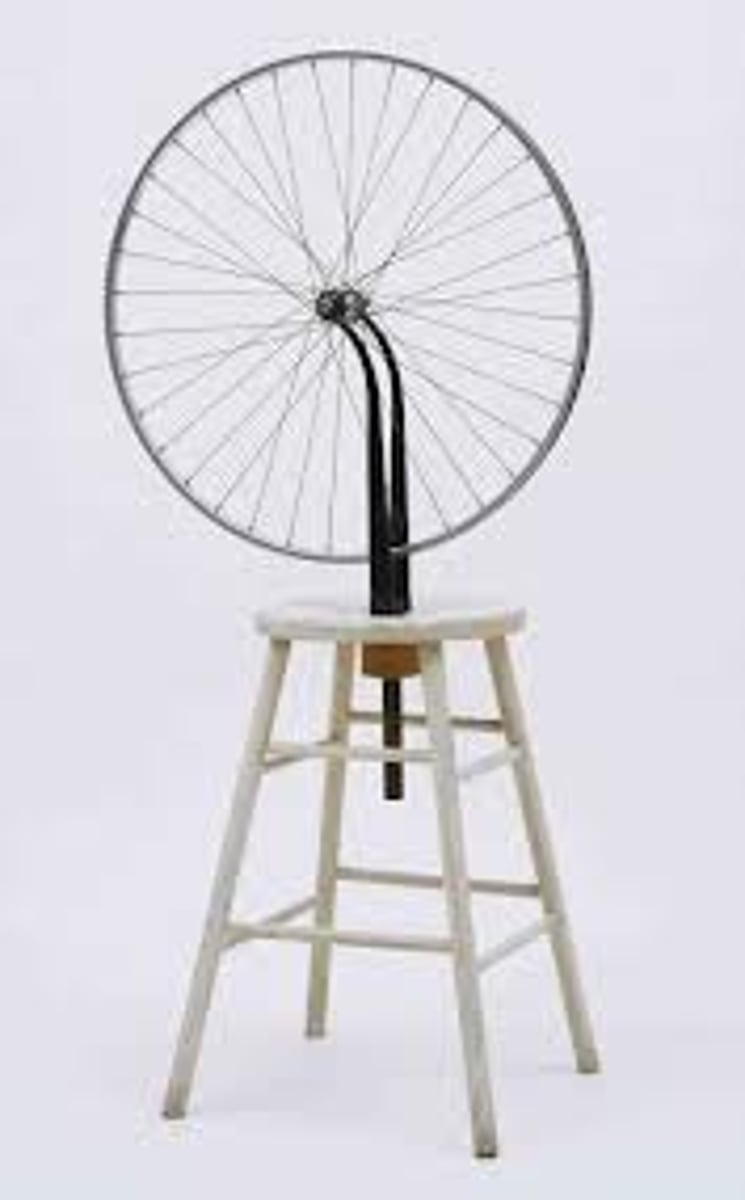
Nude Descending a Staircase No. 2
Duchamp's 1912 Cubist painting that broke away from old painting styles and inspired his 'readymades.'
Nude Descending a Staircase No. 2 controversy
The uproar around this painting showed that old ways of showing things in art were changing, and painting itself was being re-evaluated.
Tatlin
A main artist in Russian Constructivism, who believed artwork's shape should come from its materials.
Constructivism
An early 1900s art movement that focused on real materials, industrial ways of making things, and art's use in society.
Counter-relief
Tatlin's artworks that were like sculptures coming off the wall, often spanning across it.
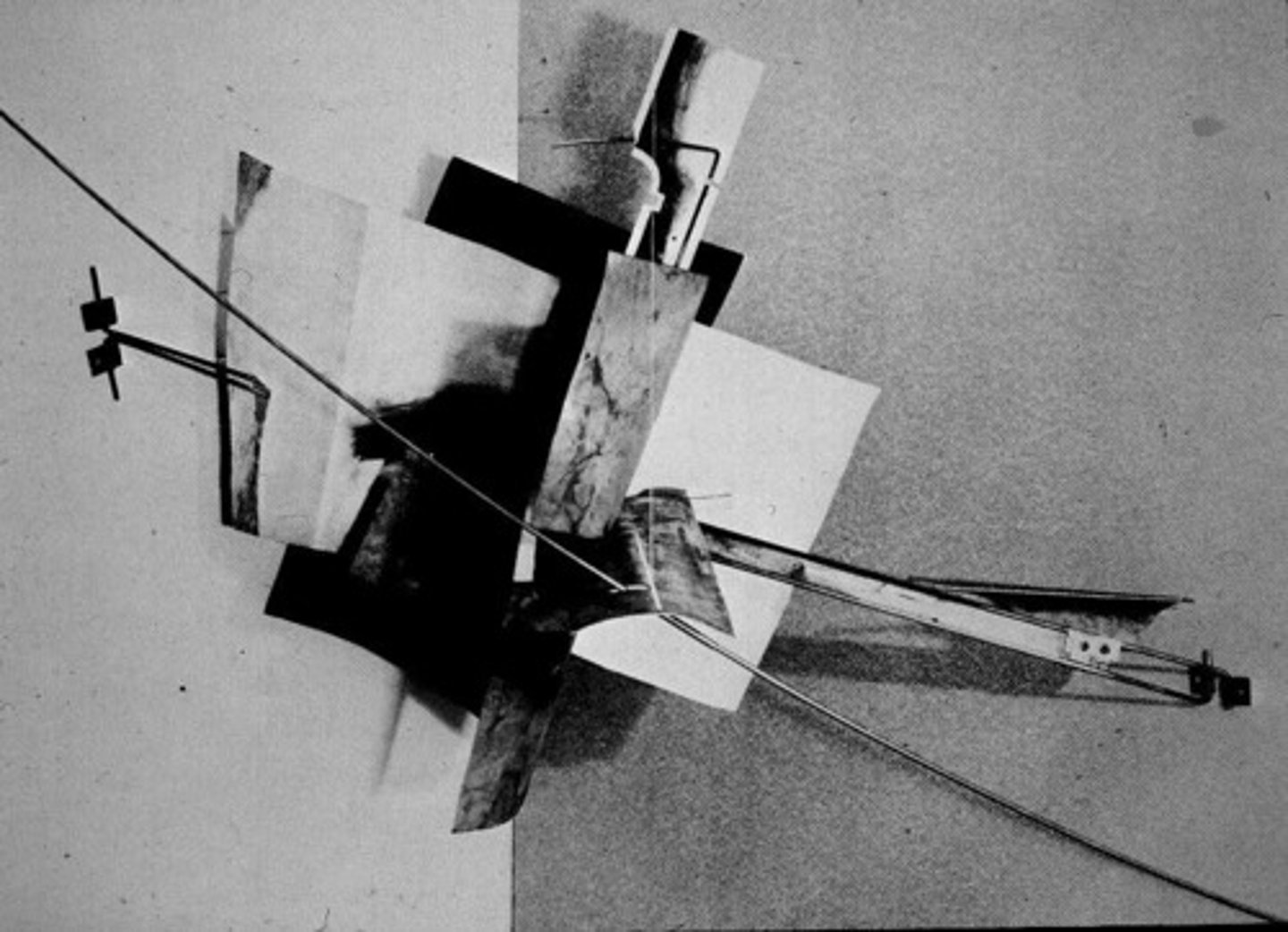
Corner counter-reliefs
Tatlin's sculptures placed in room corners, held by wires, making people think about space and interact with the art.
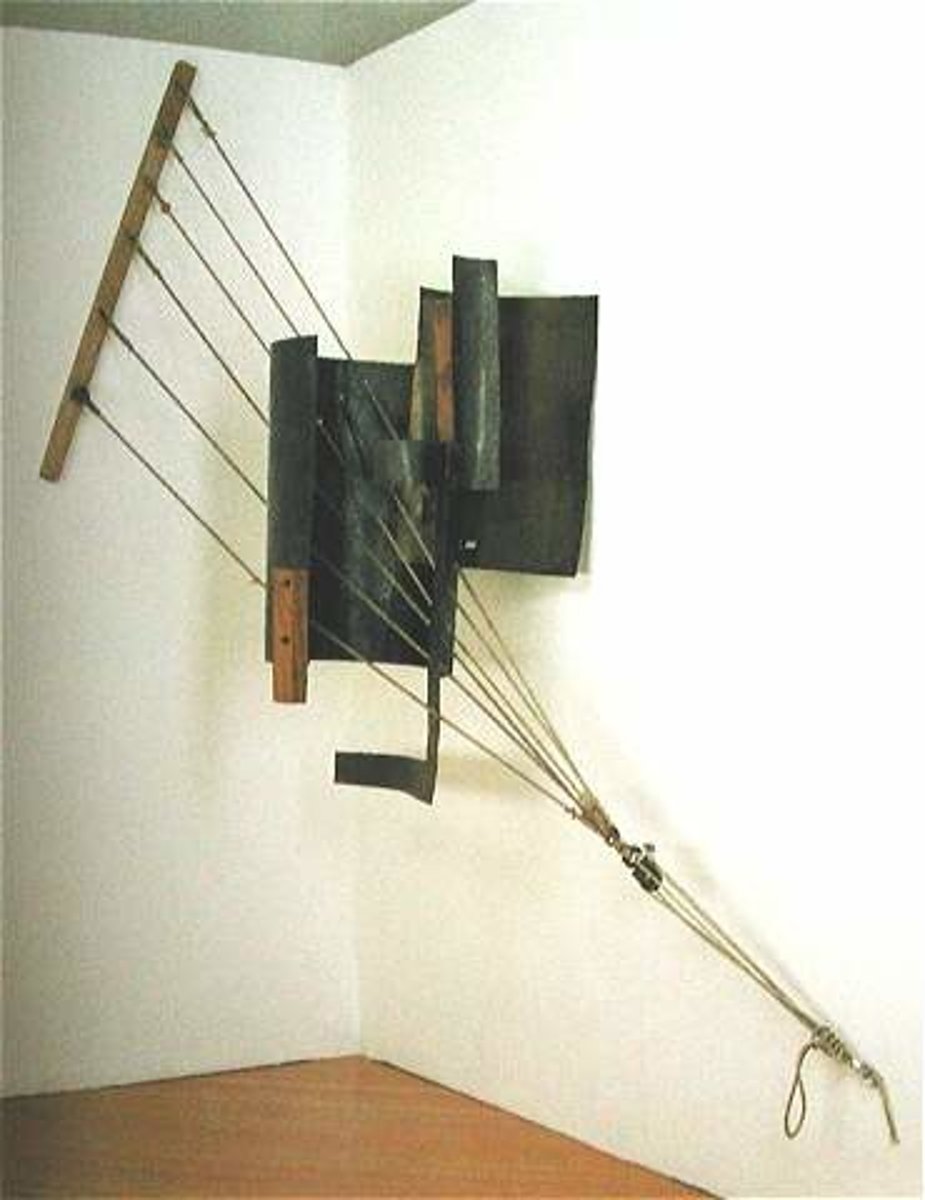
Faktura
A Constructivist idea focusing on the visible marks left by tools and materials, showing how something was made, not just the artist's personal touch.
Materials in Tatlin's Work
Tatlin believed that the materials he used (like wood, metal, glass) should decide what the artwork looked like.
Tarabukin
An early critic of Constructivism who said that the materials used in art should determine its shape and design.
Selection of Materials: Iron
Stucco, Glass, Asphalt,Tatlin's 1914 artwork that showed how the natural qualities of materials like iron, stucco, glass, and asphalt guided its form.
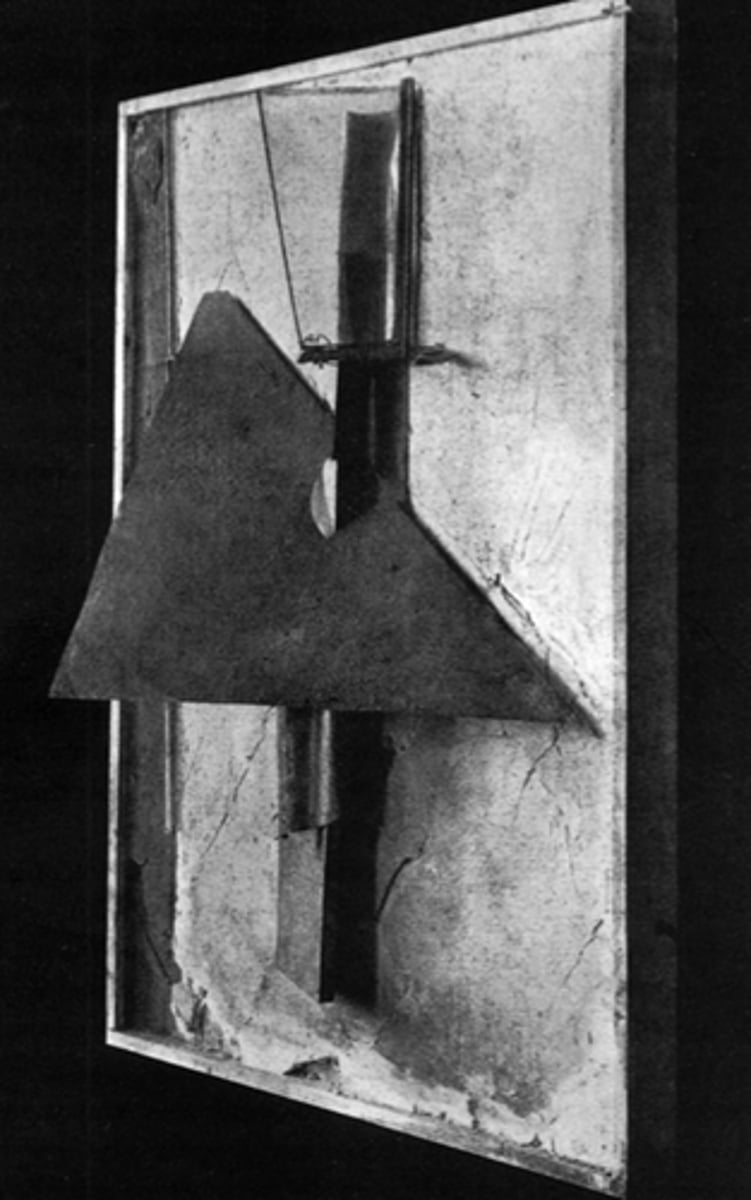
The frame (Tatlin's work)
Even when Tatlin used new materials and styles, frames often stayed as an important design part of his art.
The Bottle (1913)
Tatlin's early sculpture-like artwork from 1913 that used different materials to represent various objects.
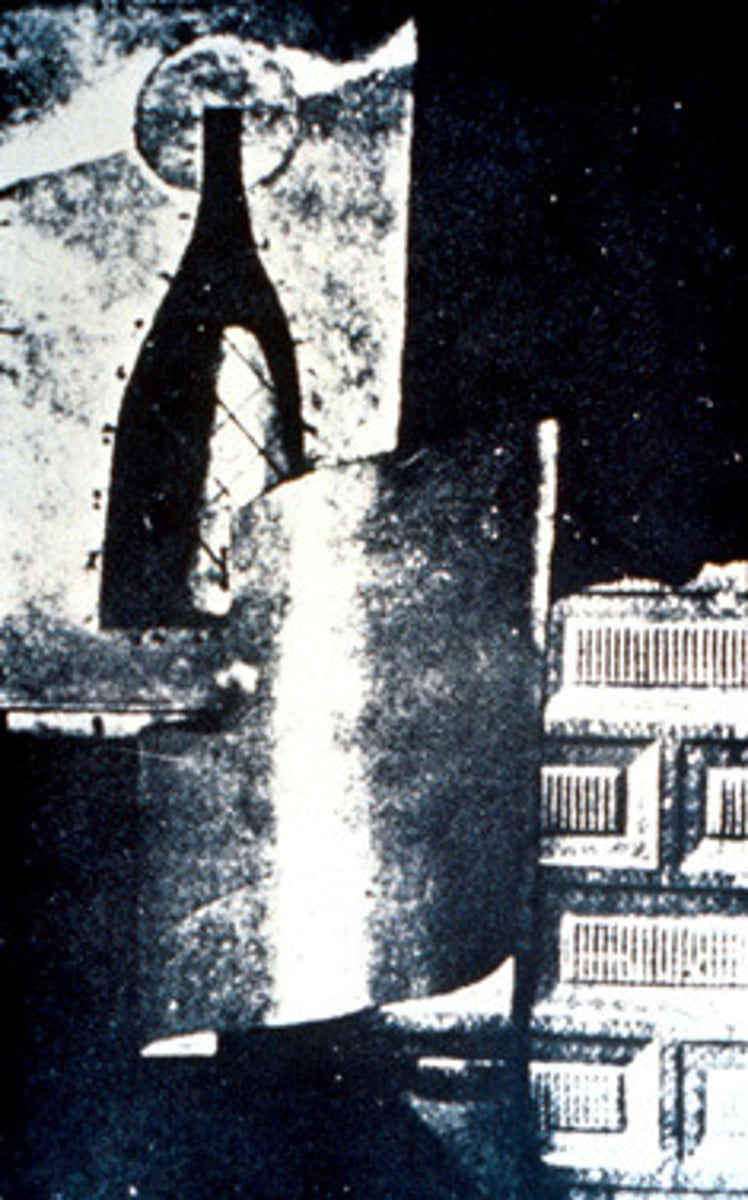
The Last Futurist Exhibition of Paintings
A 1915 art show in Petrograd where Tatlin and other artists displayed their new 'counter-reliefs' and Constructivist art.
Material dictates the form
Tatlin's main idea: the shape of an artwork should come from the materials themselves, not from a pre-planned design.
Icon as influence
Tatlin was inspired by old Russian religious paintings (icons) and medieval art when making his modern artworks.
Monument to the Third International
Tatlin's grand plan for a Constructivist building that was never built. It was meant to be a symbol of new materials and a fresh look at society.
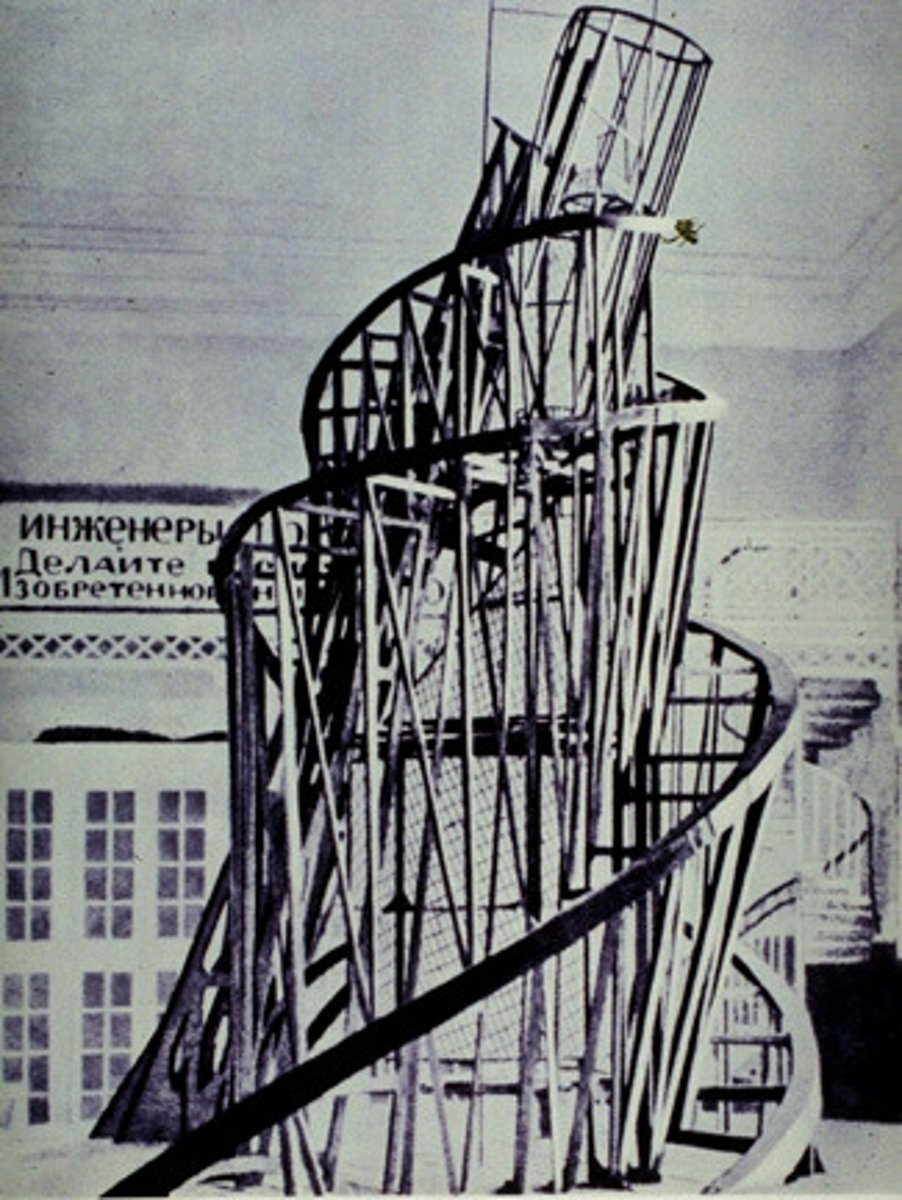
Picasso's Guitar (1912)
Picasso's Cubist sculpture, 'Guitar,' which helped move Tatlin towards creating art out of actual materials.
Guitar (1912)
Picasso's Cubist artwork, 'Guitar' from 1912, influenced Tatlin's early material-based sculptures.
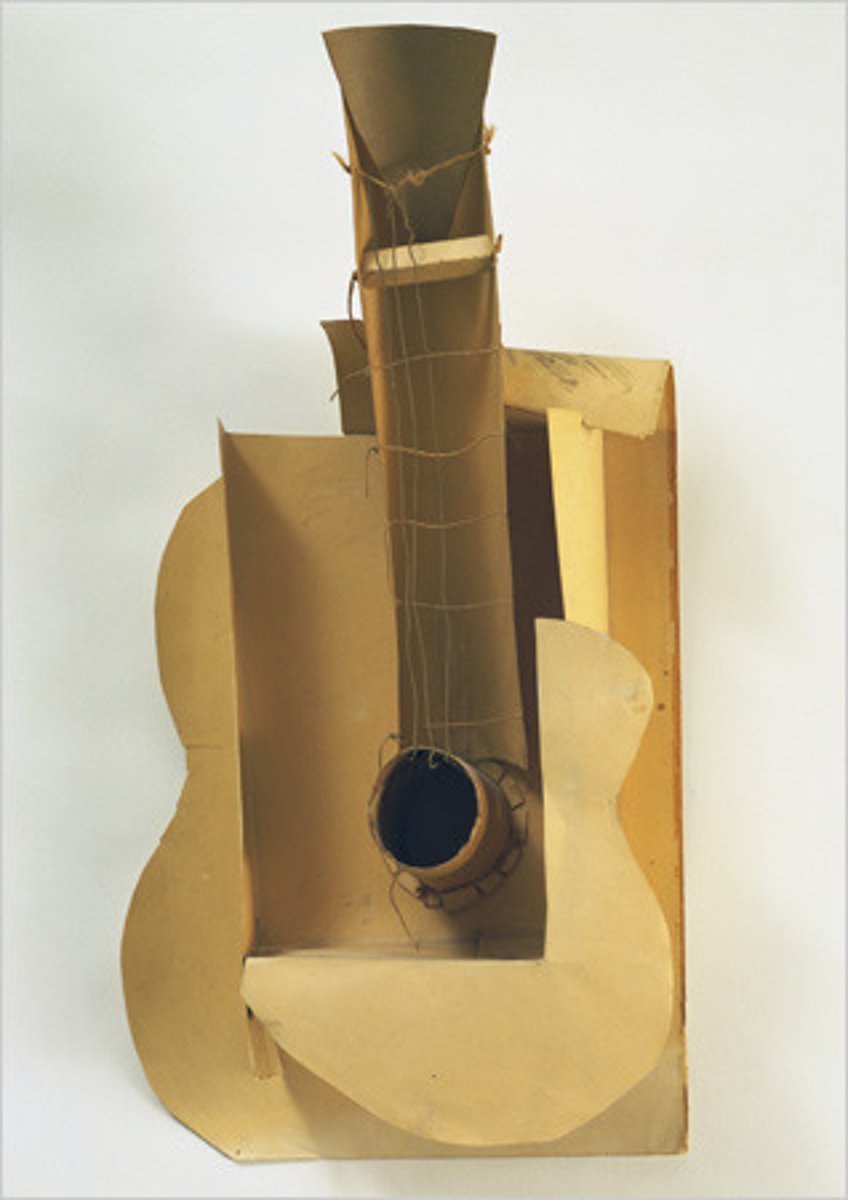
Dada
An early 1900s art movement that hated traditional art, using chance, jokes, and 'anti-art' ideas.
Nude Descending a Staircase (1900-1911)
This early Cubist work showed how painting was changing and influenced new art movements.
Dematerialization of art
The move in art from physical, handmade objects to focusing on ideas, processes, and questioning art institutions.
Fountain and the institution
Duchamp's 'Fountain' made people wonder who gets to say what is art and what isn't.
Bottlerack (1914)
Duchamp's 'readymade' bottlerack from 1914, which showed the difference between something useful and something beautiful in art.
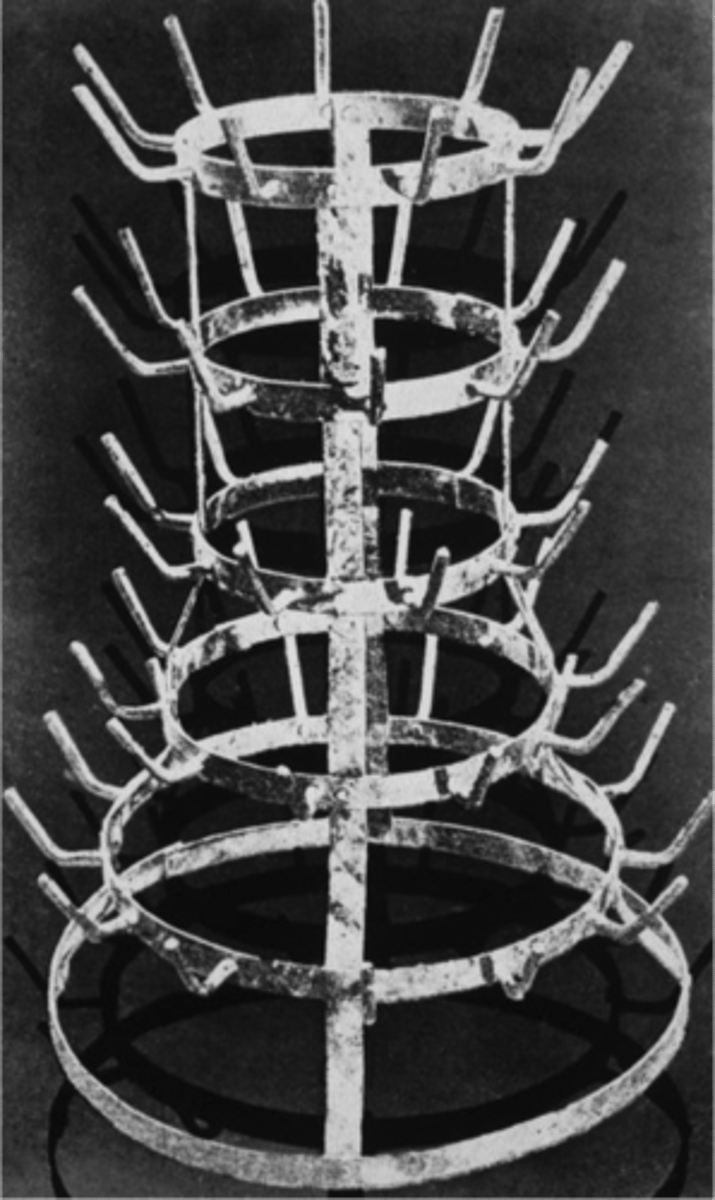
Rembrandt ironing-board note
Duchamp once thought about using a famous Rembrandt painting as an ironing board, just to make people question art's purpose.
The Large Glass (The Bride Stripped Bare by her Bachelors
Even),A big, later artwork by Duchamp that explored how traditional painting was falling apart.
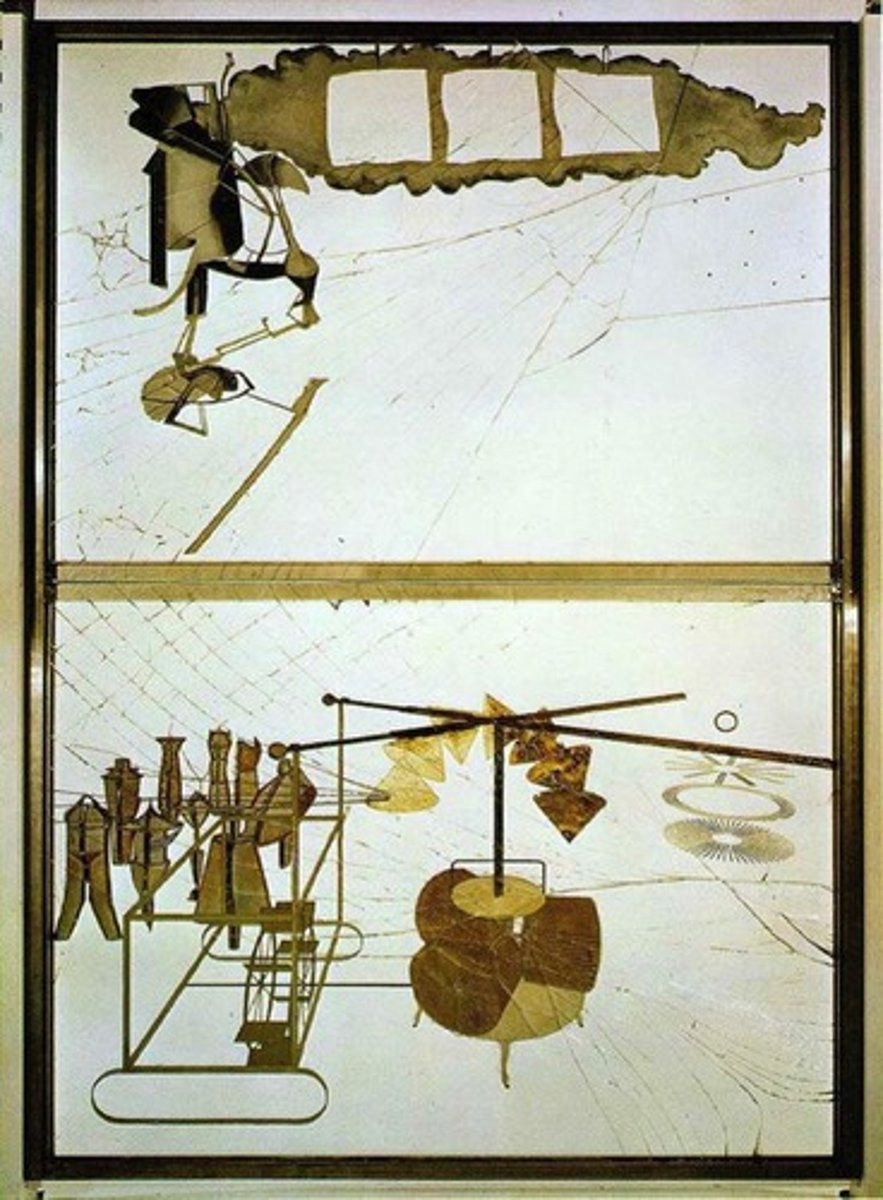
Readymade Nominalism (1913-14)
Duchamp's idea that simply naming an object as art is what makes it art.
New York 1915 war-time readymades
When Duchamp moved to New York during wartime in 1915, he firmly established the 'readymade' as his main artistic style.
Fountain defense (The Richard Mutt Case)
Duchamp's argument for his 'Fountain' artwork, which fought against censorship and challenged who had the power to judge art.
The Decentering of authorship
With readymades, the artist's role changed from making things by hand to simply choosing and naming an object as art.
Erased de Kooning Drawing (1953)
Rauschenberg erased a drawing by de Kooning to create a new artwork, making us think about who owns art and what 'action painting' really is.
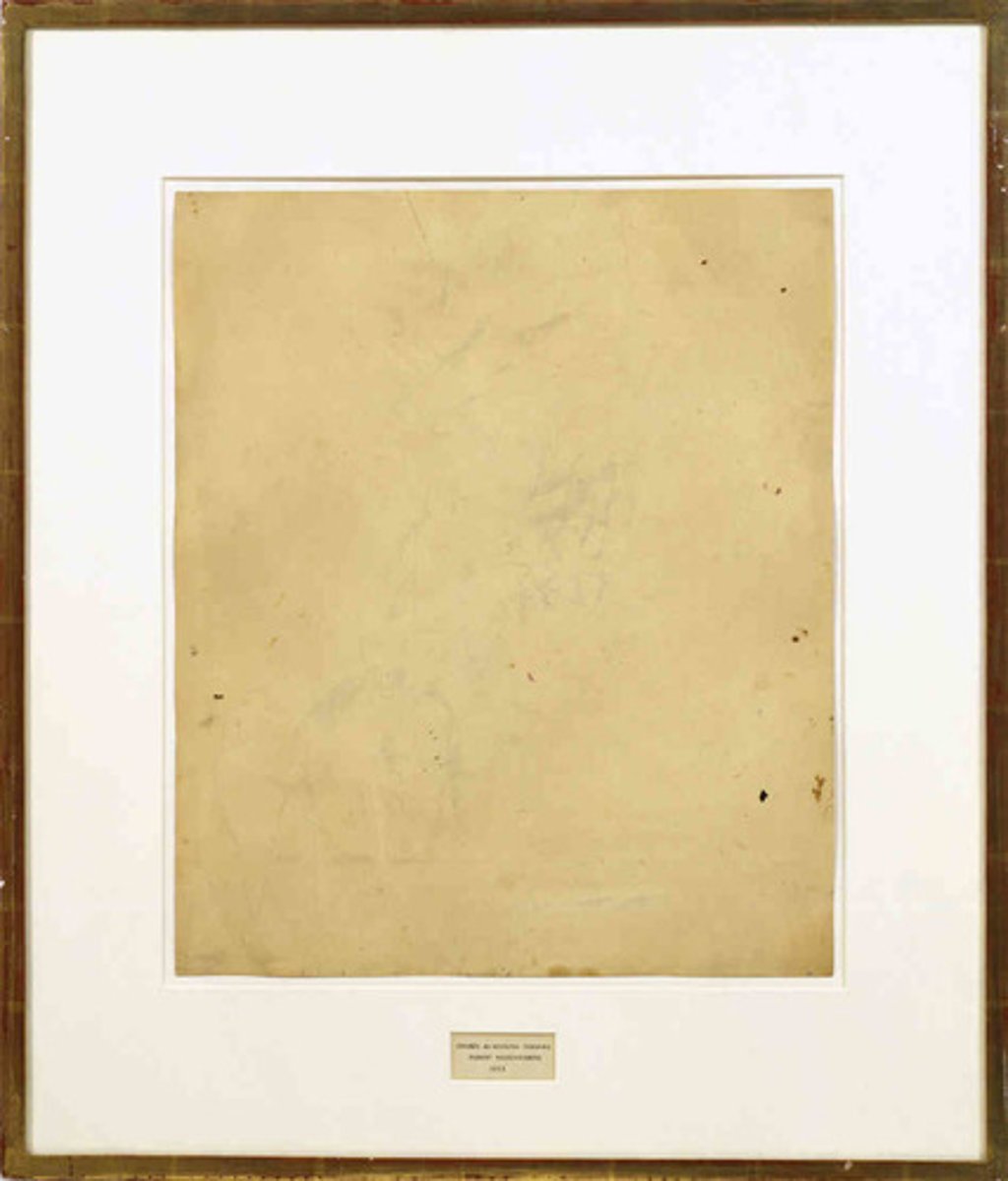
White Paintings (1951)
Rauschenberg's simple white paintings with no images, which looked at absence and subtle marks left behind.
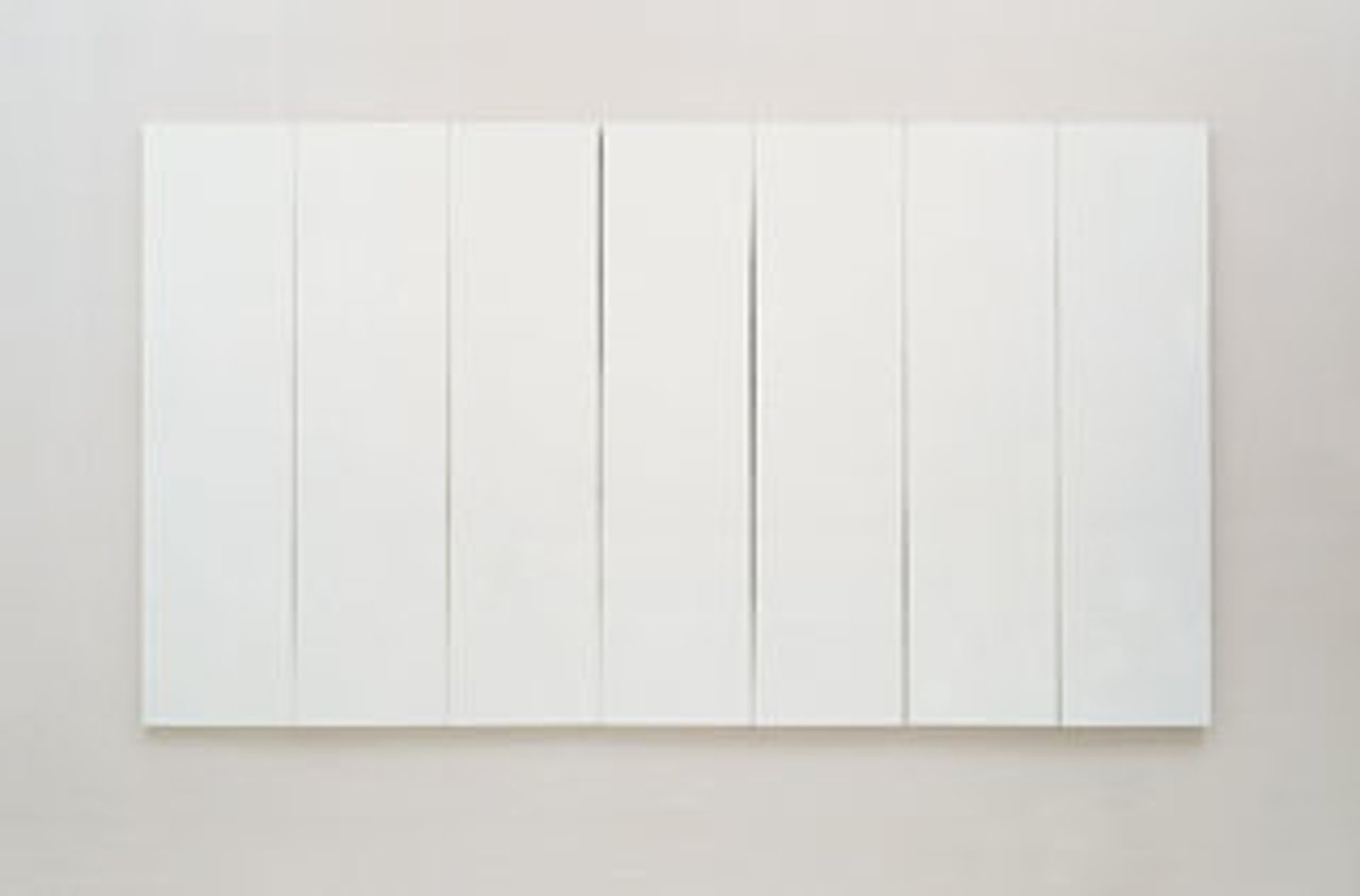
Automobile Tire Print (1953)
Rauschenberg's artwork made by rolling a car tire over paper, using a real trace to challenge traditional art composition.
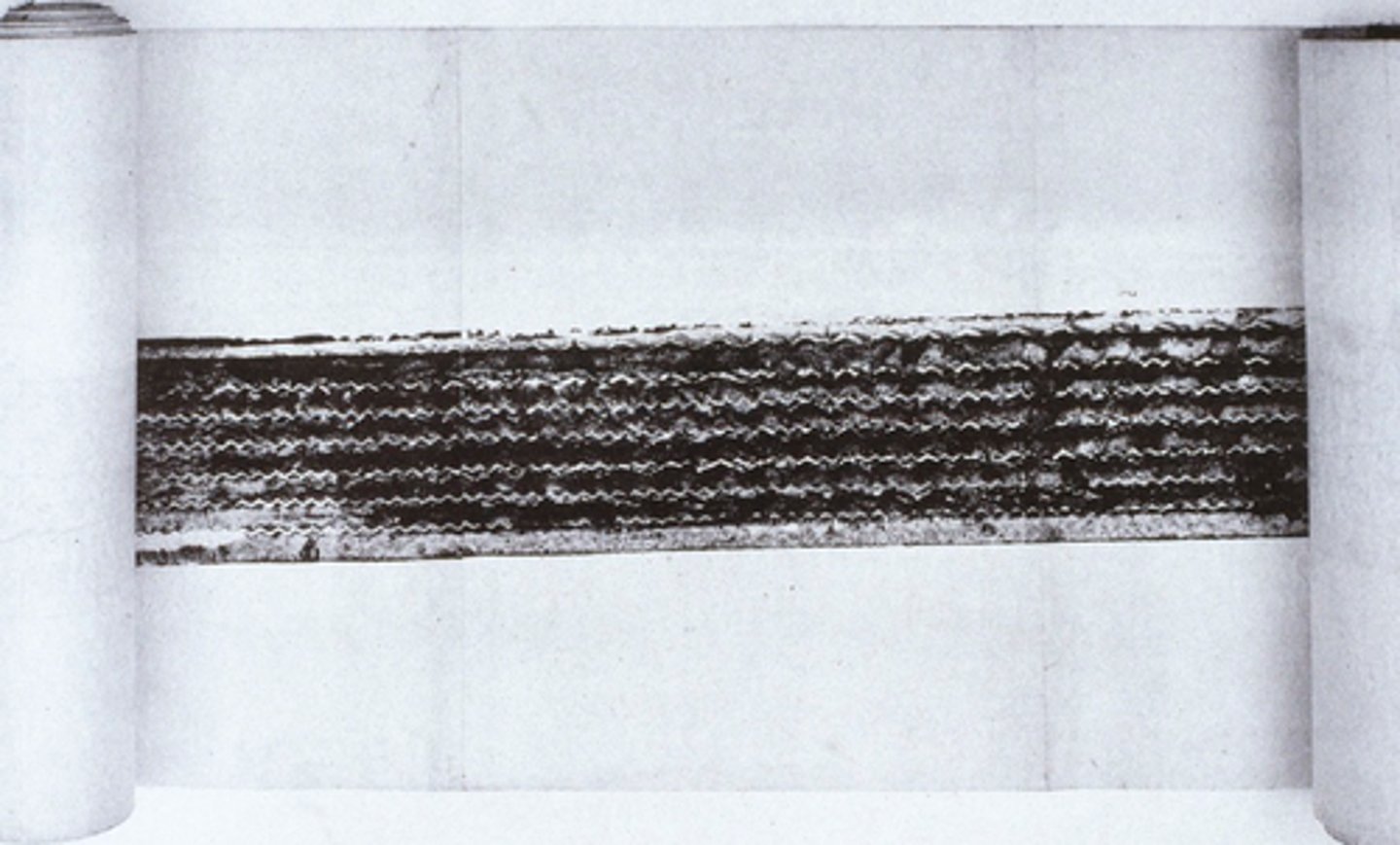
Cage's 4′33″ (1952)
John Cage's famous musical piece where the musicians sit in silence for 4 minutes and 33 seconds, focusing on accidental sounds and what people experience.
Indexical trace
A mark or sign (like a shadow or a tire print) that directly shows what created it and when.

Pollock and the "index" of painting
Looking at how painting is real by focusing on the active traces left by the artist's movements, rather than just static marks.
Rauschenberg and Cage collaboration
The partnership between Rauschenberg and Cage, which used ideas of chance, presence, and physical traces to shape art after the war.
Jackson Pollock
An Abstract Expressionist artist famous for his 'drip' painting style, which influenced art focused on the process of making.
Bourgeois
An artist famous for her personal, body-focused, and feminist sculptures and art setups.
Eva Hesse
A key postminimalist sculptor whose art, using materials like latex and fiberglass, explored the body and the limits of materials.
Yayoi Kusama
A Japanese artist famous for her 'Infinity Nets,' 'Accumulations,' and immersive rooms covered in polka dots.
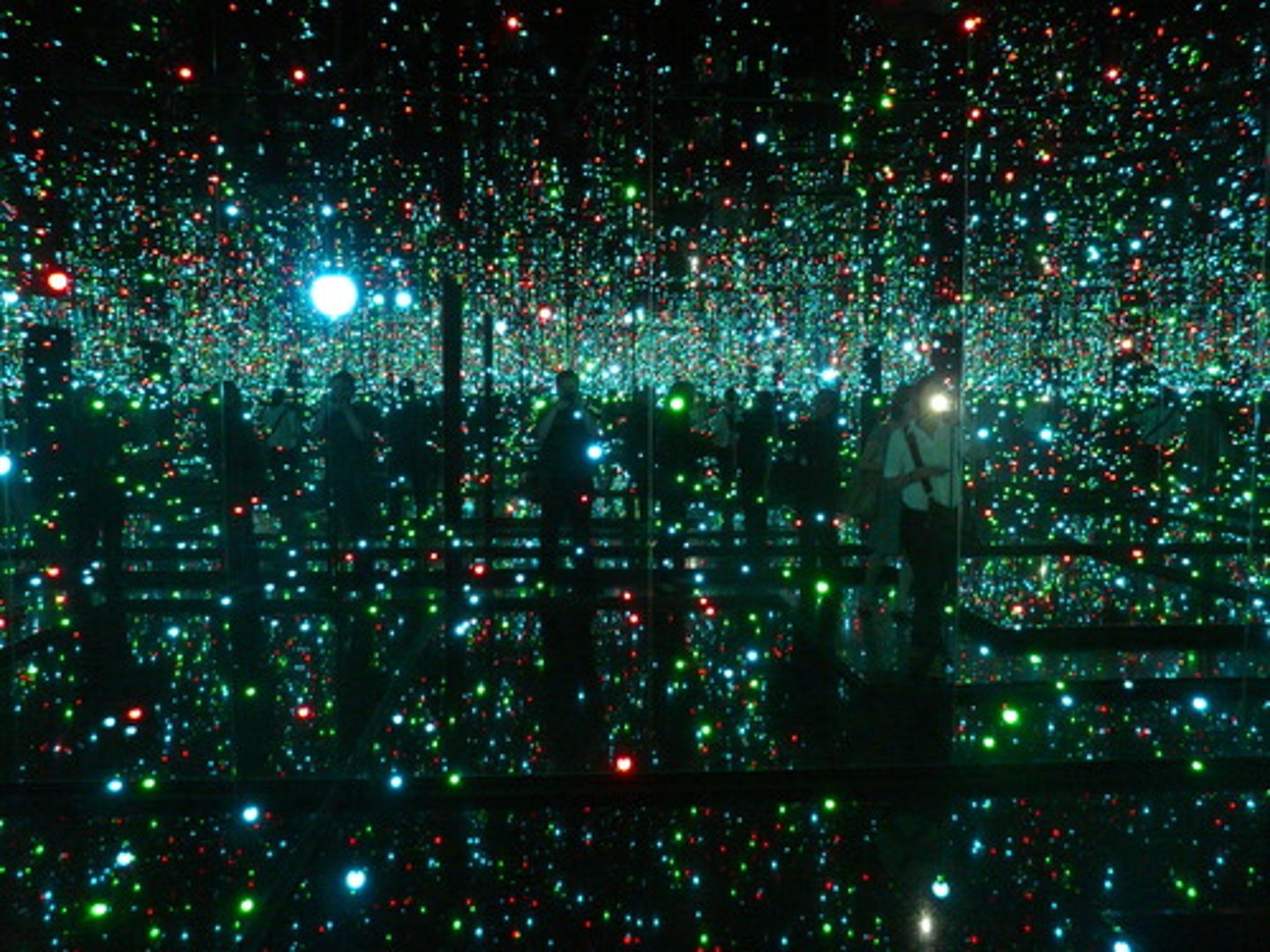
Infinity Mirror Room: Phalli's Field
A Kusama art setup with mirrors and phallic (penis-shaped) forms that explores endless repetition and identity.
S.O.S. Starification Object Series
Kusama's series featuring vulva-like shapes in different ways, making a feminist statement about sexuality.
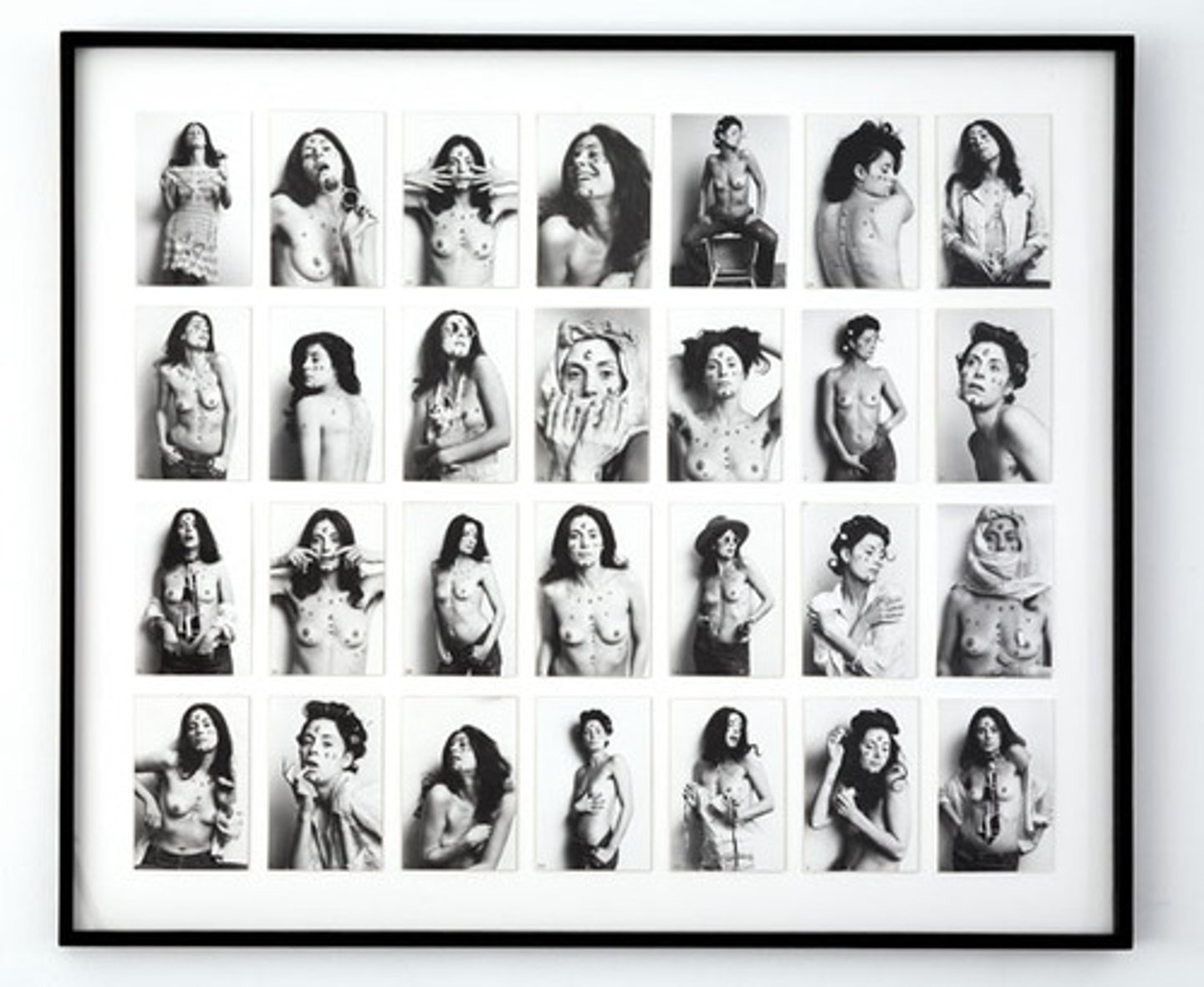
Louise Bourgeois's The Destruction of the Father (1974)
A very important feminist sculpture that deals with anger towards a father and family pain.
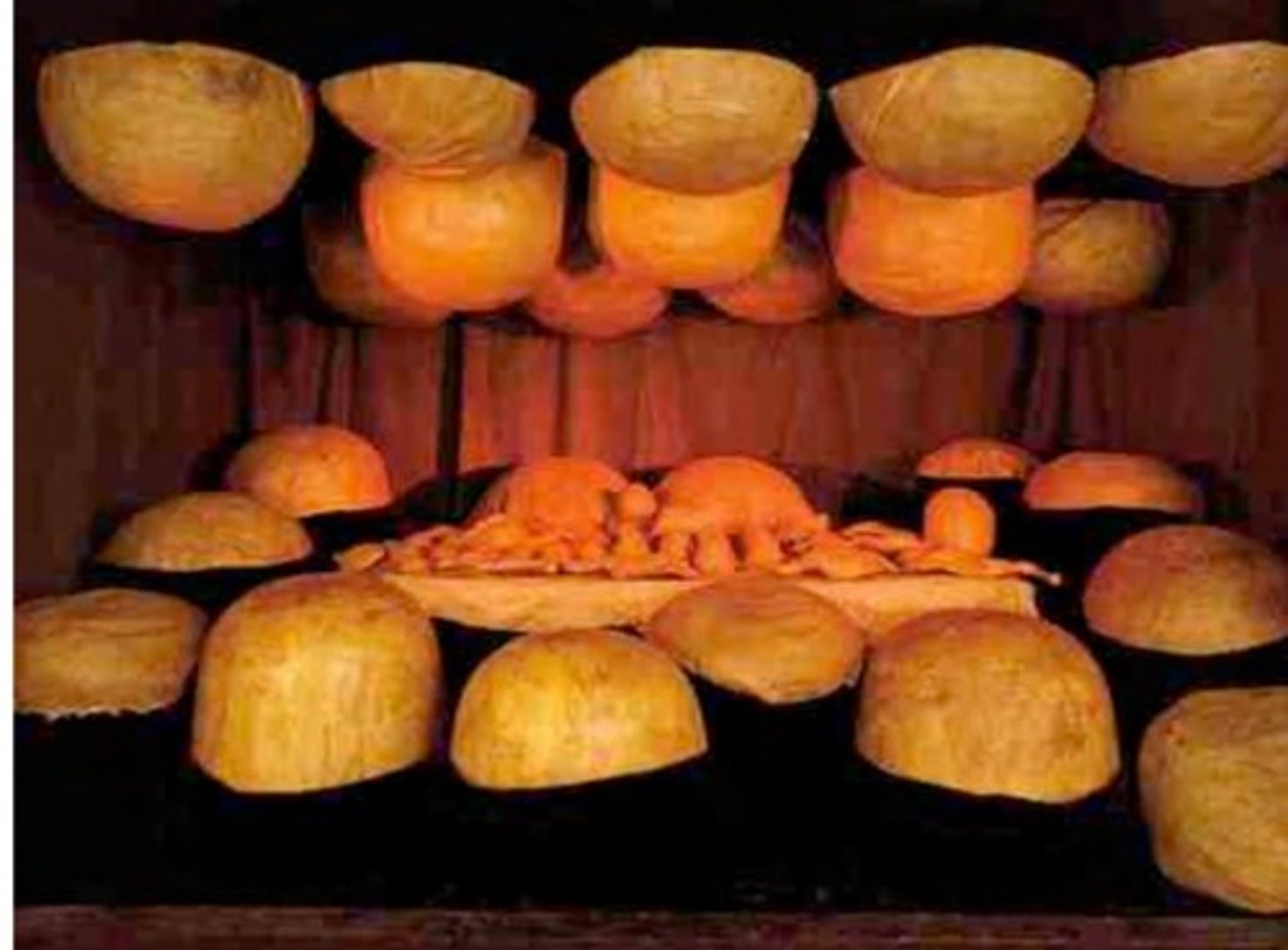
La Fillette (Little Girl) (1993-95)
A Bourgeois sculpture using latex to create a womb-like shape, offering a feminist perspective on the traditional male symbol (phallus).
Womanhouse (1971-72)
Judy Chicago's feminist art project where an entire house was transformed into rooms reflecting women's myths and experiences.
Dinner Party (1974-79)
Judy Chicago's huge feminist artwork, made with others, that honors 39 important women using decorative porcelain plates.
Feminist Art Program (FAP)
Judy Chicago's program at CalArts that taught women artists and led to the creation of 'Womanhouse.'
Virginia Nochlin: Why Have There Been No Great Women Artists?
An essay by Virginia Nochlin that argues social rules prevented women from becoming famous artists by limiting their education and chances.
AfriCOBRA
African Commune of Bad Relevant Artists, a group from the Black Arts Movement that focused on a shared, unique Black aesthetic.
OBAC
Organization for Black American Culture, a key Black Arts group based in Chicago.
I. Jarrell
Revolution",Wadsworth Jarrell's 1971 painting 'Revolutionary,' which honored Angela Davis and the fight for Black freedom.
Shine
An AfriCOBRA term for the bright, dignified, and beautiful look they wanted in African-American art.
Angela Davis
A Black activist whose image and ideas deeply influenced AfriCOBRA artworks, such as Jarrell's 'Revolutionary.'
Emory Douglas
The artist for the Black Panther Party, known for his powerful political graphics used to send messages to the community.
Women's Art Movement (AIR)
Artists in Residence (AIR), a group in New York that developed feminist ideas and critiques in art.
Vanessa Spero's Torture of Women (1974)
A series by Vanessa Spero that used text and images to document violence against women, a feminist statement.
Notes in Time on Women (1979)
Nancy Spero's scroll-like artworks that combined images of women from history and modern times with themes of violence.
Semiotics of the Kitchen (1975)
Martha Rosler's performance that used kitchen tools to criticize traditional gender roles and the meaning behind them.
Three Weeks in May (1977)
Suzanne Lacy's performance art piece that publicly marked locations of reported rapes in Los Angeles.
Public Practice
Art that actively involves and works with communities, expanding what feminist art could be.
Beuys
Joseph Beuys, an artist who connected art to social change, using 'social sculpture' and materials like fat and felt.
Fat
Felt, and SHamanism,Beuys used materials like fat and felt, along with shamanistic ideas, to symbolize healing society and making art for everyone.
Organization for Direct Democracy (1990s)
Beuys's political group that pushed for 'direct democracy' (people voting directly on laws) in Europe in the 1990s.
Spiral Jetty (1970)
Robert Smithson's huge artwork made of rocks and dirt in Utah, a very important piece of 'earth art.'
Earth Art/ Land Art
An art movement where artists used natural environments and materials to create their artworks outdoors.
Smithson's anti-dialectics
Smithson's idea of breaking down traditional ways of telling stories in art, using ideas of decay and the specific location of the art.
Michel Foucault
A French thinker who showed how knowledge and power are connected. His ideas influenced how people talk about and critique art.
Louis Althusser (ISA)
A Marxist thinker who studied how 'ideological state apparatuses' (like schools, media) shape how people think and act in society.
Roland Barthes
A theorist who studied 'semiotics' (the study of signs and symbols), arguing that meaning is created through language and images.
Jacques Derrida
A philosopher known for 'deconstruction,' which questions single, fixed meanings in language and culture.
Lyotard
A postmodern thinker who criticized big, overarching stories ('grand narratives') and emphasized differences between people and ideas.
Postmodern Condition
Lyotard's important book that said the modern world no longer believes in big, universal stories about progress or truth.
Post-Structuralism/Deconstruction
Ideas that question whether meaning is fixed or stable, suggesting it's constantly changing and depends on many factors.
Nam June Paik
A key artist who started video art and was part of the Fluxus movement. He made works like 'Zen for Film.'
Fluxus
An international art movement where art was seen as an action or event, often involving the audience.
Hi-Red-Center
A Japanese Fluxus art group famous for their 'Cleaning Event' and other public performances.
Nam June Paik's Zen for Film
Nam June Paik's video art piece where he used blank film leader to create a silent, image-free film.
Cleaning Event (Hi Red Center)
A performance by Hi-Red-Center where they symbolically cleaned a real part of Tokyo as a political statement.
Materiality/Process art
Art where the main focus is on the actual materials used and the way the artwork was made, not just the final look.
Robert Morris
A Minimalist artist who explored 'Anti-Form' art, where materials and their natural properties guided the sculpture's shape.
Donald Judd
A leading Minimalist artist who believed in 'Specific Objects,' artworks that are like sculptures but also have a strong presence in the room.
Specific Objects
Judd's idea for artworks that combine elements of both sculpture and painting, creating unique objects that stand on their own.
Ellsworth Kelly
A Minimalist artist who used 'found objects' and transferred their shapes or colors into his art.
"Already made"
The idea that an object can become art simply by someone calling it art.
Colors for a Large Wall
Ellsworth Kelly's artwork made of many colored panels, inspired by color blocks he found in the world.
Ben Day dots
Small colored dots, similar to those in comic books, used by Lichtenstein to create shading and color effects in his paintings.
Roy Lichtenstein
A Pop artist who took images from comic books and turned them into large, ironic paintings, bringing popular culture into high art.
Popeye (Lichtenstein)
Lichtenstein's painting using an image from a Popeye comic, complete with the famous Ben Day dots.
Popeye
1961,Lichtenstein's 1961 painting that famously copied an image from a comic strip.
Pop Art
An art movement that used images from popular culture (like ads and comics) to mix high art with everyday life.
Andy Warhol
A famous Pop artist known for repeatedly printing images and using pictures from mass media.
Gerhard Richter
A modern painter who explored new ways to create images, often playing with how we see and understand them.
James Rosenquist
A Pop artist famous for huge paintings that combine many different images, such as his work 'F-111.'
F-111
Rosenquist's very large Pop Art mural that mixes images of military planes with everyday consumer products.
Guggenheim/Met museum debates
Discussions and arguments at museums like the Guggenheim and Met when they started showing Pop Art in the 1960s-70s, questioning its real worth and place in art.